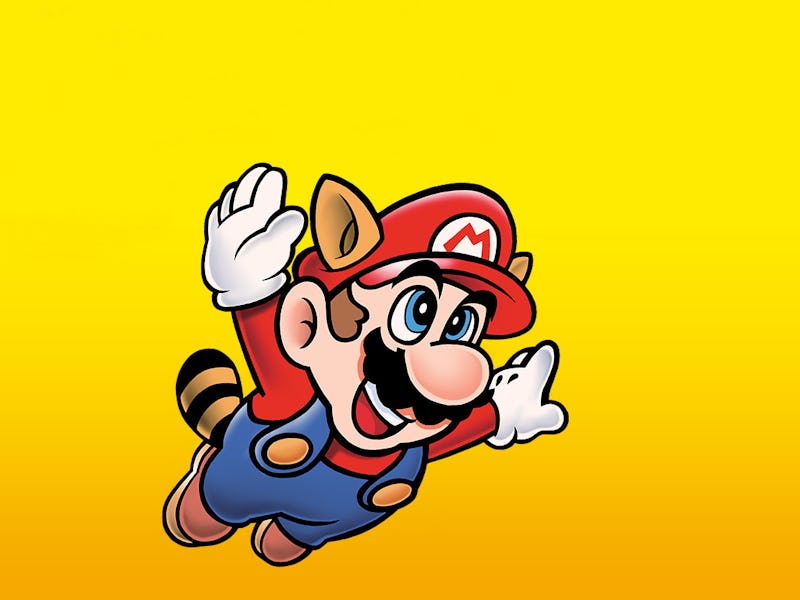33 Years Ago, One Power-Up Transformed Nintendo's Most Iconic Series Forever
Playing dress-up.

For all the new twists the critically acclaimed Super Mario Bros. Wonder adds to Nintendo’s most iconic series, none has gotten more attention than the Elephant Fruit, which transforms whoever eats it into, well, an elephant. (And probably for a variety of reasons that are none of my business, much of that attention seems to be focused on Elephant Peach.)
But whether it’s pandering to certain corners of the internet or not, Super Mario Bros. Wonder’s elephant transformation is just the latest in a lineage of animal-themed power-ups that began in one of the best Super Mario games ever made.
Super Mario Bros. 3’s raccoon suit opens up entire new levels to explore.
Released in the U.S. on February 12, 1990, at the tail end of the NES’ lifespan, Super Mario Bros. 3 was a generational leap from the games that preceded it. The improvement in its graphics is obvious from the start, but it’s the gameplay evolution that really cements it as a series high point. Especially coming after the oddball Super Mario Bros. 2 (famously a reskin of an entirely different game), Super Mario Bros. 3 feels like a new template that all future games will be built on.
With its curtain-raising title screen and technicolor art style, Super Mario Bros. 3 strikes a playful tone that makes its predecessors seem downright dull. The Mushroom Kingdom is more vibrant this time around, full of secret shortcuts and alternate routes. But it’s Super Mario Bros. 3’s revamped power-ups that steal the show, and none is more iconic than Raccoon Mario.
Tanooki Mario does everything Raccoon Mario can and more.
Confusingly, Mario takes on his raccoon form by using the Super Leaf power-up. While there’s no real connection between raccoons and leaves for players outside of Japan, it’s tied to the Japanese raccoon dog, which is the basis of another power-up we’ll get to later. Raccoon Mario can use his tail to swipe away enemies, which is nice. But it’s the ability to fly that really defines this powered-up form.
Letting players soar through the air opened up new possibilities for how Nintendo could build Mario levels and how players would approach them. No longer constrained to just follow a clear path of platforms, Raccoon Mario could take to the skies to find hidden paths and entire sub-levels that you’d never see without flying to find them. The challenge of Super Mario Bros. 3, and future games in the series, was transformed from just making it through a level intact to seeking out every secret collectible and optional route.
Later Super Mario games would expand on this idea, packing their stages with stars to gather. That, in turn, would help games like Super Mario 64 become stalwarts of the speedrunning scene and turn the focus of Mario superfans from simply beating the games to wringing every last secret from them.
Super Mario Bros. 3 also introduced a Frog Suit, seen here in Super Mario Maker 2.
Raccoon Mario is by far the most useful transformation in Super Mario Bros. 3, but others are just as iconic. While it doesn’t appear as frequently, the Tanooki Suit inherits all of the Super Leaf’s powers and lets Mario turn into a statue to evade enemies. The ability comes from a folkloric version of Japan’s tanuki (native wild dogs also called raccoon dogs), which are said to be shapeshifting tricksters. Picking up the Tanooki Suit also puts Mario into a cute onesie with a tail and ears, which is just as important of an upgrade.
Additionally, Super Mario Bros. 3 introduces the equally adorable Frog Suit. Essential in underwater levels, the Frog Suit is nearly useless on land, as it makes Mario move slower than normal. But even something as limited as the Frog Suit is part of Super Mario Bros. 3’s magic. Sure, you’re not going to get as much use out of turning into a frog as you would from becoming a flying tanuki, but it adds one more element of cartoonish fun to the game.
The spirit of Super Mario is wild reinvention, off-the-wall ideas, and an ever-growing list of abilities. Super Mario Bros. 3 opened the door to all of that, and it all started with a simple leaf.
Super Mario Bros. 3 is available to play on Nintendo Switch with a Switch Online subscription.
This article was originally published on